Related Research Articles
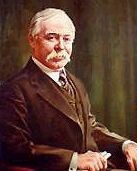
Marcus Daly was an Irish-born American businessman known as one of the four "Copper Kings" of Butte, Montana, United States.

Bodie is a ghost town in the Bodie Hills east of the Sierra Nevada mountain range in Mono County, California, United States. It is about 75 miles (121 km) southeast of Lake Tahoe, and 12 mi (19 km) east-southeast of Bridgeport, at an elevation of 8,379 feet (2554 m). Bodie became a boom town in 1876 after the discovery of a profitable vein of gold; by 1879 it had established 2,000 structures with a population of roughly 8,000 people.

James Graham Fair was an Irish immigrant to the United States who became a highly successful mining engineer and businessman. His investments in silver mines in Nevada made him a millionaire, and he was one of the famous "silver kings" who became wealthy on the Comstock Lode. Fair later became a real estate investor and railroad builder in California. In 1881, he was elected a United States Senator from Nevada. Nearly all other major so-called robber barons were Protestants while Fair himself died a Roman Catholic though born into poverty to Anglican parents.

Virginia City is a census-designated place (CDP) that is the county seat of Storey County, Nevada, and the largest community in the county. The city is a part of the Reno–Sparks Metropolitan Statistical Area.

The Comstock Lode is a lode of silver ore located under the eastern slope of Mount Davidson, a peak in the Virginia Range in Virginia City, Nevada, which was the first major discovery of silver ore in the United States and named after American miner Henry Comstock.

William Wright (1829–1898), better known by the pen name Dan DeQuille or Dan De Quille, was an American author, journalist, and humorist. He was best known for his written accounts of the people, events, and silver mining operations on the Comstock Lode at Virginia City, Nevada, including his non-fiction book History of the Big Bonanza.
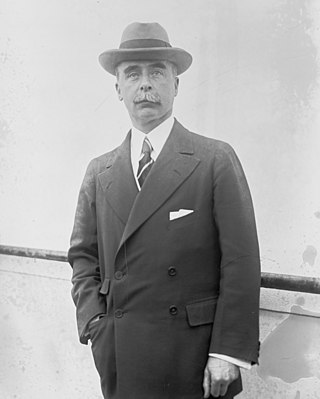
Clarence Hungerford Mackay was an American financier. He was chairman of the board of the Postal Telegraph and Cable Corporation and president of the Mackay Radio and Telegraph Company.
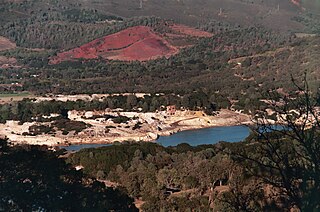
The Sulphur Bank Mine is located near Clearlake Oaks and Clear Lake in Lake County, California. The 150-acre (0.61 km2) mine became one of the most noted mercury producers in the world.
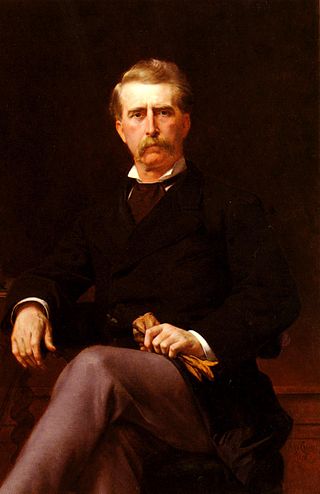
John William Mackay was an Irish-American industrialist who rose from rags to riches. Born into abject poverty and raised in the slums of New York City, Mackay became one of the four Bonanza Kings, a partnership which capitalized on the wealth generated by the silver mines at the Comstock Lode in Nevada, making him one of the richest Americans in his time. He also headed a telegraph business that laid transatlantic cables, and he helped finance the New York, Texas and Mexican Railway Company. His granddaughter Ellin Berlin was the wife of Irving Berlin.

The Homestake Mine was a deep underground gold mine located in Lead, South Dakota. Until it closed in 2002 it was the largest and deepest gold mine in North America. The mine produced more than forty million troy ounces of gold during its lifetime. This is about 2,500 cubic feet (71 m3) or a volume of gold roughly equal to 18,677 US gallons.
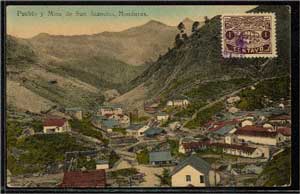
The New York and Honduras Rosario Mining Company (NYHRMC), known as Rosario Mining Company, was an American-owned corporation that owned and operated the Rosario mine, a gold and silver producer in central Honduras and Nicaragua.

Theresa Alice "Tessie" Fair was an American socialite. She went from being the daughter of a hard-scrabble California miner to become heiress to a fortune in Comstock Lode gold and silver, the wife of steamship magnate Hermann Oelrichs, mistress of the Rosecliff estate in Newport, Rhode Island, and a member of the elite "Triumvirate" of American society."
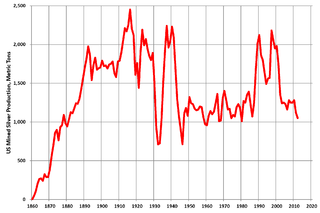
Silver mining in the United States began on a major scale with the discovery of the Comstock Lode in Nevada in 1858. The industry suffered greatly from the demonetization of silver in 1873 by the Coinage Act of 1873, known pejoratively as the "Crime of 73", but silver mining continues today.
Silver mining in Colorado has taken place since the 1860s. In the past, Colorado called itself the Silver State.

James Clair Flood was an American businessman who made a fortune thanks to the Comstock Lode in Nevada. His mining operations are recounted to this day as an outstanding example of what may be done with a rich ore body and a genius for stock manipulation. Flood piled up millions as one of the famed "Bonanza Kings" and is considered to have been one of the 100 wealthiest Americans, leaving an enormous fortune. He is famous for two mansions, the James C. Flood Mansion at 1000 California St. in San Francisco, and Linden Towers located in Menlo Park, torn down in 1936.

William Shoney O'Brien was an Irish-born American businessman. He formed a business partnership with fellow Irishmen James Graham Fair, James C. Flood, and John William Mackay, the Consolidated Virginia Mining Company. The four dealt in mining stocks and operated silver mines on the Comstock Lode, and in 1873 discovered the great orebody known as the "Big Bonanza" in the Consolidated Virginia and California Mine, an orebody more than 1,200 feet deep, which yielded in March of that year as much as $632 per ton, and in 1877 nearly $190,000,000 altogether. The four-way partnership, although formally called "Flood and O'Brien," was more commonly known as the Bonanza firm.
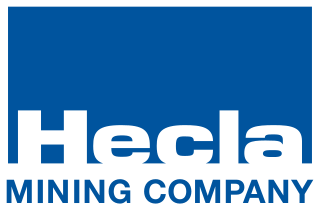
Hecla Mining is a gold, silver, and other precious metals mining company based in Coeur d'Alene, Idaho. Founded in 1891, it is the second-largest mining company that produces silver in the country. This area is known as the Silver Valley (Idaho). In 1983, this entire area was designated as a Superfund site by the Environmental Protection Agency, because of land, water, and air contamination resulting from a century of mostly unregulated silver and gold mining.
The Ontario silver mine is a mine that was active starting in 1872, and is located near Park City, Utah, United States.

Osisko Gold Royalties Ltd is a Canadian company that holds royalties in gold, silver and diamond mines, principally in the form of net smelter returns and streams. The company also invests in mineral exploration companies in the form of purchases of shares. Like its predecessor company, Osisko Mining, it is headquartered in Montreal, Quebec, with shares listed on the Toronto Stock Exchange and the New York Stock Exchange.

Robert Craig Chambers was an American 19th-century businessman, minerals miner, banker, politician, sheriff, and silver mine supervisor. He had mining investments in many states, and was one of the best-known miners in the west. Chambers was a prominent figure in the formation of Butte, Montana, and Park City, Utah; and was named one of Utah's Bonanza Kings because he led the operation of the Ontario silver mine near Park City, from 1872 until 1891.
References
- ↑ Divine, Robert A. (2002). America, past and present, Volume 2 . New York: Longman. ISBN 978-0-321-08403-3. OCLC 46507333.
- ↑ Klepper, Michael; Gunther, Michael (1996), The Wealthy 100: From Benjamin Franklin to Bill Gates—A Ranking of the Richest Americans, Past and Present , Secaucus, New Jersey: Carol Publishing Group, pp. 70–74, ISBN 978-0-8065-1800-8, OCLC 33818143
- Adams, James Truslow; Coleman, R.V. (1940), Dictionary of American history (1 ed.), New York: Charles Scribner's Sons, OCLC 1019589
- Own, Our (1876-12-15), "THE MINING ARISTOCRACY.; SOCIAL STANDING OF SAN FRANCISCO'S BONANZA KINGS. THE ANCIENT FEUDS OF THE MAGNATES OF THE MINES--FLOOD AND O'BRIEN, FAIR AND MACKEY, MORROW AND BALDWIN IGNORED IN SOCIETY--RALSTON'S RUIN--THE EXPLOITS AND CHARITIES OF "KNIGHTLY JIM" KEENE.", The New York Times , New York, p. 7, retrieved 2011-10-01